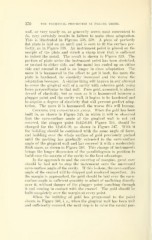Page 570 - My FlipBook
P. 570
270 THE TECHNICAL PROCEDURES IN FILLING TEETH.
wall, or very nearly so, as generally seems most convenient to
do, very certainly results in failure to make close adaptation.
This is illustrated in Figures 338, 339. A piece of perfectly
flat plate is laid on an anvil and is seen to fit the surface per-
fectly, as in Figure 338. An instrument point is placed on the
margin of the plate and struck a sharp blow that is sufiScient
to indent the metal. The result is shown in Figure 339. The
portion of plate under the instrument point has been stretched,
or pushed to either side, and the metal has curled up on either
side and around it and is no longer in close adaptation. The
more it is hammered in the effort to get it back, the more the
plate is hardened, its elasticity increased and the worse the
adaptation becomes. A similar thing will happen in any attempt
to cover the gingival wall of a cavity with cohesive gold, using
force i^erpendicular to that wall. Pure gold, annealed, is almost
devoid of elasticity, but as soon as it is hammered between a
plugger point and the cavity wall, it begins to be hardened and
to acquire a degree of elasticity that will prevent perfect adap-
tation. The more it is hammered, the worse this will become.
Covering the cavo-sukface angle. When the gold has been
built in, as shown in Figure 345, in which it will be observed
that the cavo-surface angle of the gingival wall is not yet
covered, the plugger point 6x12-6-10, Figure 344, should be
changed for the 12x6-6-10, as shown in Figure 347. With it
the building should be continued with the same angle of force,
and building over the whole surface of gold previously packed
until the packing has gradually extended to the cavo-surface
angle of the gingival wall and has covered it with a moderately
thick mass, as shown in Figure 346. This change of instruments
brings the longer dimension of the parallelogram in position to
build over the margin of the cavity to the best advantage.
In the approach to and the covering of margins, great care
should be had not to step the instrument onto the uncovered
cavo-surface angle of the cavity. Tf this is done, the cavo-surface
angle of the enamel will be chii^ped and rendered imperfect. x\s
the margin is approached, the gold should be laid over the cavo-
surface angle in sufficient quantity to admit of malleting directly
over it, without danger of the plugger point punching through
it and coming in contact with the enamel. The gold should be
built completely over the margin at every point.
When the building of gold has progressed to the point
shown in Figure 346, i. e., when the gingival wall has been well
and sufficiently covered, the next step is to raise the mesial por-


